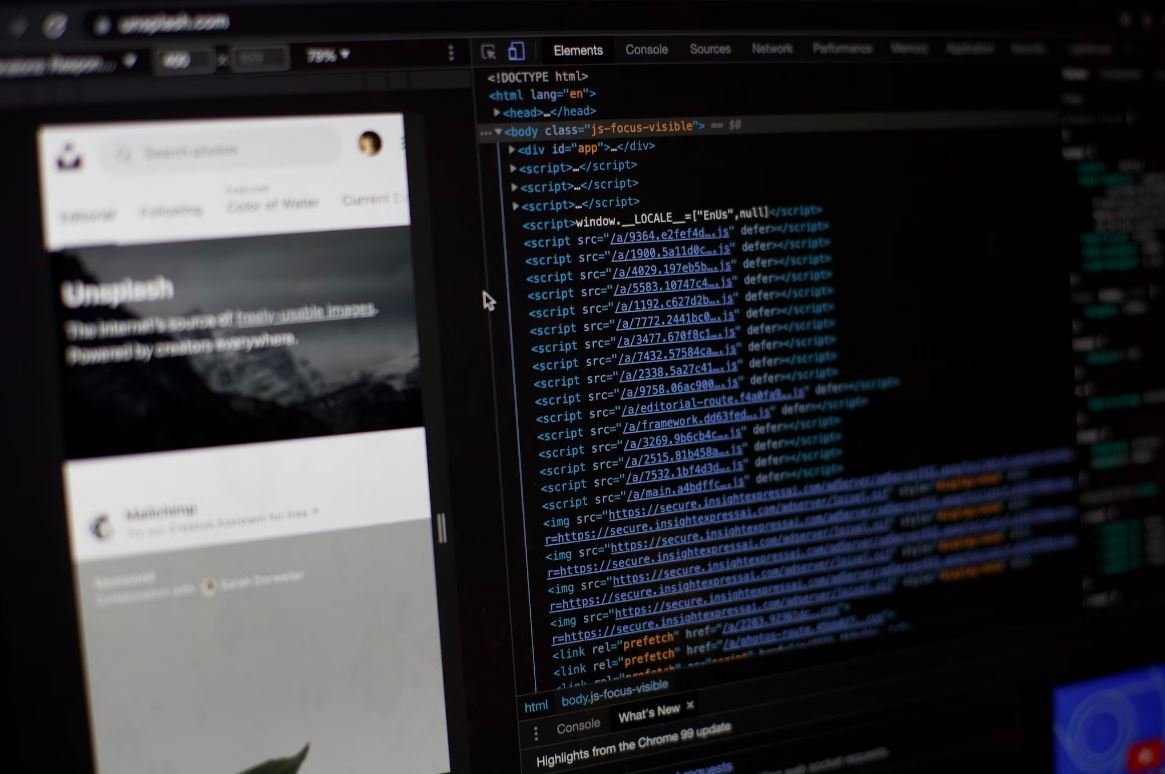Data Mining vs Data Dredging
Data mining and data dredging are two terms commonly used in data analysis, but they have distinct meanings and purposes. Understanding the differences between data mining and data dredging is important for ensuring the accuracy and reliability of research and analysis.
Key Takeaways
- Data mining involves extracting meaningful patterns and insights from a large set of data.
- Data dredging refers to the practice of mining data specifically to find patterns that support a preconceived hypothesis.
- Data mining aims to discover new knowledge and insights, while data dredging can lead to spurious correlations and false conclusions.
- Data mining involves using statistical techniques and algorithms, while data dredging relies more on exploratory analysis.
What is Data Mining?
Data mining is the process of discovering patterns, relationships, and insights in large volumes of data. It involves using statistical techniques, machine learning algorithms, and data visualization tools to uncover hidden patterns and trends that can be used for prediction or decision-making. Data mining aims to find valuable information that may not be immediately apparent in the data.
Data mining can help businesses identify market trends and customer preferences, enabling them to make data-driven decisions for marketing and product development.
What is Data Dredging?
Data dredging, also known as data snooping or data fishing, is the practice of searching through a dataset to find patterns or relationships that fit a preconceived hypothesis or agenda. This approach involves conducting multiple statistical tests or exploratory analyses on the same dataset until a significant result is found, often leading to false discoveries or spurious correlations.
Data dredging can be misleading and result in incorrect conclusions, as it disregards the natural occurrence of random fluctuations in data and instead focuses on selectively presenting statistically significant findings.
Data Mining vs Data Dredging
While data mining and data dredging both involve analyzing data, they have significant differences in their purpose, methodology, and outcomes.
Data Mining
- Objective: Discover new insights and knowledge.
- Methodology: Use statistical techniques and algorithms to identify patterns.
- Outcomes: Accurate findings and valuable insights.
Data Dredging
- Objective: Support a preconceived hypothesis.
- Methodology: Conduct multiple tests or analyses until a significant result is found.
- Outcomes: Spurious correlations and false conclusions.
Data Mining Techniques
Data mining involves various techniques to extract useful information from large datasets. Some commonly used techniques include:
- Classification: Categorizing data into predefined classes based on a set of attributes.
- Clustering: Grouping similar data points together based on their characteristics.
- Association: Identifying relationships between different variables in the data.
- Regression: Predicting a continuous outcome variable based on other variables.
- Outlier detection: Identifying unusual or anomalous data points that deviate from the norm.
Data Dredging Pitfalls
Data dredging can lead to misleading results and false conclusions due to several pitfalls:
| Pitfall | Description |
|---|---|
| Multiple hypothesis testing | Increasing the likelihood of false positives by conducting multiple tests. |
| Data overfitting | Finding patterns that do not hold true in independent datasets. |
| Data snooping bias | Ignoring the natural occurrence of random fluctuations in data and selectively presenting significant findings. |
Conclusion
Data mining and data dredging may appear similar on the surface, but they have different objectives and outcomes. Data mining is a valuable tool for discovering new insights, while data dredging can lead to misleading conclusions. It is important to use data mining techniques to ensure the accuracy and reliability of research and analysis, avoiding the pitfalls of data dredging.

Common Misconceptions
Misconception 1: Data Mining and Data Dredging are the same thing
Many people mistakenly believe that Data Mining and Data Dredging are synonyms for each other. In reality, these two terms refer to different approaches in analyzing data, with distinct objectives and methodologies.
- Data mining aims to extract meaningful patterns or relationships from large datasets.
- Data dredging focuses on analyzing data in a way that may lead to false or misleading results.
- Data mining is a disciplined and systematic approach, while data dredging involves more exploratory analysis without a specific hypothesis.
Misconception 2: Data Mining always leads to meaningful insights
Another common misconception is that data mining always generates valuable and actionable insights. While data mining techniques can provide valuable information, it does not guarantee that every analysis will result in meaningful conclusions.
- Data mining can uncover unexpected relationships or patterns that were not initially apparent.
- However, the quality and relevance of the data being analyzed greatly influence the potential insights generated.
- Care must be taken to ensure the data used in data mining is accurate, reliable, and representative of the target population.
Misconception 3: Data Dredging is equivalent to random analysis
Some people mistakenly associate data dredging with random analysis, assuming that it involves haphazard examination of data without a structured approach. However, data dredging involves a distinct process that may lead to misleading results.
- Unlike random analysis, data dredging involves selectively testing multiple hypotheses or variables within a dataset.
- Data dredging increases the likelihood of identifying relationships that are merely coincidental due to the sheer number of comparisons being made.
- To mitigate the risk of false discoveries, proper statistical techniques should be employed when conducting data dredging.
Misconception 4: Data Mining is only applicable to large datasets
There is a prevalent misconception that data mining can only be performed on massive datasets. While data mining is often used on large datasets to identify hidden patterns, it is not exclusive to them.
- Data mining techniques can be applied to datasets of varying sizes, depending on the research question and objective.
- Even small datasets can benefit from data mining methods to uncover insights that may not be immediately apparent.
- The key is to ensure that the dataset being analyzed is representative of the population of interest, regardless of its size.
Misconception 5: Data Mining and Data Dredging are unethical practices
Some individuals mistakenly perceive data mining and data dredging as unethical practices, assuming that these approaches exploit data for personal gain or manipulative purposes. However, this is not an accurate reflection of their intended use.
- Data mining is widely employed for various legitimate purposes, such as improving decision-making, predicting trends, and enhancing business processes.
- Conversely, data dredging can lead to unreliable or misleading findings, but it can also serve as an exploratory analysis technique to identify potential areas for further research.
- Ethical considerations come into play when data mining or dredging is conducted transparently, with respect for privacy, and with responsible use of findings.

Data Mining vs Data Dredging: Distinguishing Analysis Techniques
Data Mining and Data Dredging are two distinct techniques used in the field of data analysis. Data Mining allows researchers to discover patterns and relationships in large datasets, while Data Dredging often involves a more exploratory approach, where various analyses are conducted on a dataset without a specific hypothesis in mind. In this article, we will explore the main differences between these two techniques and illustrate their application using a series of interesting tables.
Table: Top 10 Most Mined Minerals in the World
This table showcases the top 10 minerals that are extensively mined worldwide. The data provides an overview of their annual production, demonstrating how data mining techniques can be utilized to analyze and uncover valuable information in large-scale mining operations.
| Mineral | Annual Production (in Metric Tons) |
|---|---|
| Coal | 7,674,467,000 |
| Iron Ore | 2,498,176,000 |
| Bauxite | 349,987,000 |
| Phosphate Rock | 285,000,000 |
| Gypsum | 267,385,000 |
| Salt | 264,000,000 |
| Sulfur | 245,665,000 |
| Silver | 24,300 |
| Gold | 3,531 |
| Diamond | 3 |
Table: Comparison of Data Mining and Data Dredging Techniques
This table provides a concise comparison of the key differences between Data Mining and Data Dredging techniques. It highlights the varying objectives, approaches, and the level of hypothesis testing involved in both methods.
| Data Mining | Data Dredging | |
|---|---|---|
| Objective | Discovering patterns and relationships | Exploratory analysis without hypothesis |
| Focus | Structured analysis with predefined goals | Exploring data without specific targets |
| Hypothesis Testing | Integral part of the process | Minimally incorporated (if at all) |
| Data Size | Large datasets | Often smaller-scale datasets |
| Outcome | Insights and actionable results | Initial exploration for further analysis |
Table: Impact of Data Mining and Data Dredging in Healthcare
In the healthcare industry, both Data Mining and Data Dredging techniques can be utilized to analyze patient data for valuable insights. This table presents a comparison of their respective effects on improving healthcare delivery and patient outcomes.
| Data Mining | Data Dredging | |
|---|---|---|
| Advantages | Identification of disease patterns and risk factors | Potential for unexpected, novel discoveries |
| Applications | Treatment optimization and personalized medicine | Hypothesis generation and further research |
| Risks | Patient privacy concerns | Increased false positive findings |
| Examples | Predictive analytics for disease diagnosis | Exploratory analysis of patient records |
Table: Data Mining vs Data Dredging Approaches in Finance
Data analysis techniques play a crucial role in the financial sector. This table illustrates the comparative approaches and impacts of Data Mining and Data Dredging in the finance industry, including risk analysis, fraud detection, and market predictions.
| Data Mining | Data Dredging | |
|---|---|---|
| Techniques | Predictive modeling and forecasting | Exploratory data analysis |
| Applications | Risk assessment and portfolio optimization | Market trends and unexpected insights |
| Benefits | Improved decision-making and profitability | Inspiration for further investigations |
| Pitfalls | Overfitting and false discoveries | Increased risk of false-positive findings |
Table: Ethical Considerations of Data Mining and Data Dredging
Data analysis techniques raise important ethical considerations. This table explores some of the ethical aspects associated with Data Mining and Data Dredging, emphasizing the need for responsible and transparent data practices.
| Data Mining | Data Dredging | |
|---|---|---|
| Privacy | Potential privacy breaches | Unintended exposure of sensitive information |
| Data Bias | Possible biased model outcomes | Risk of biased analyses and conclusions |
| Transparency | Transparent methodology and reporting | Required to mitigate misleading findings |
| Accountability | Accountability for data usage and sharing | Accountability for transparency and rigor |
Table: Industries Benefiting from Data Mining and Data Dredging
Data analysis techniques have immense value across various industries. This table showcases a selection of sectors that have significantly benefited from the insights gained through Data Mining and Data Dredging.
| Industry | Data Mining Applications | Data Dredging Applications |
|---|---|---|
| Marketing | Market segmentation and customer profiling | Exploratory analysis of customer preferences |
| Retail | Inventory management and demand forecasting | Exploring purchasing patterns for strategic insights |
| Transportation | Route optimization and maintenance scheduling | Exploratory analysis of travel patterns for innovation |
| E-commerce | Recommendation systems and personalized marketing | Exploring browsing behavior for engagement strategies |
Table: Notable Data Mining Algorithms and Techniques
In the realm of Data Mining, various algorithms and techniques have been developed. This table highlights some prominent Data Mining methods, elucidating their specific applications and advantages.
| Data Mining Method | Applications | Advantages |
|---|---|---|
| Decision Trees | Classification and risk assessment | Interpretability and explanatory power |
| Association Rules | Market basket analysis and recommender systems | Identification of interesting relationships |
| Clustering | Customer segmentation and anomaly detection | Unsupervised pattern discovery |
| Neural Networks | Pattern recognition and prediction | Ability to model complex relationships |
Table: Common Statistical Fallacies in Data Dredging
Data Dredging can be prone to statistical fallacies if not conducted with caution. This table enumerates some common pitfalls and biases that can emerge during exploratory data analyses, emphasizing the importance of utilizing appropriate statistical techniques.
| Fallacy | Description | Solution |
|---|---|---|
| Multiple Comparisons | Increasing the likelihood of false discoveries | Bonferroni correction or consideration of adjusted significance level |
| P-hacking | Searching for statistically significant results | Pre-registration of hypotheses or confirmatory follow-up studies |
| Data Snooping | Overfitting the model to the current dataset | Validation on independent data or cross-validation techniques |
| Data Manipulation | Tailoring the data to reach desired conclusions | Transparency and reproducibility of analyses |
In conclusion, Data Mining and Data Dredging exhibit distinct approaches and objectives in the field of data analysis. While Data Mining enables the discovery of patterns in large datasets, Data Dredging involves exploratory analysis without a predefined hypothesis. Both approaches carry their own benefits, potential risks, and ethical considerations. By understanding the differences between these techniques, researchers can employ the most appropriate method for their analysis, ensuring robust and reliable results.
Frequently Asked Questions
What is the difference between data mining and data dredging?
Data mining involves extracting meaningful patterns and information from large datasets to gain insights and make informed decisions. On the other hand, data dredging refers to the act of conducting multiple analyses on a single dataset in a way that may lead to false discoveries or overfitting the data.
How does data mining help organizations?
Data mining allows organizations to uncover hidden patterns and relationships in their data. It can be used to improve decision-making, identify trends, detect anomalies, and enhance business processes. By leveraging data mining techniques, organizations can gain a competitive edge and make more informed strategic decisions.
What are some commonly used data mining techniques?
Common data mining techniques include cluster analysis, classification, regression analysis, association rule mining, and anomaly detection. These techniques help in discovering patterns, predicting outcomes, and identifying relationships between variables.
Can data mining be performed without domain knowledge?
While data mining algorithms can automatically uncover patterns, having domain knowledge is crucial for interpreting and making use of the results effectively. Domain knowledge helps in understanding the context and implications of the discovered patterns, enabling organizations to make informed decisions.
How does data dredging affect the validity of results?
Data dredging involves testing multiple hypotheses on the same dataset, which increases the likelihood of finding false positive results. This can lead to inflated confidence in the findings and the absence of true underlying relationships. Therefore, data dredging can compromise the validity and reliability of the results.
What are some techniques to avoid data dredging?
To avoid data dredging, it is important to establish a well-defined hypothesis before conducting analyses. Additionally, proper data collection, validation, and preprocessing techniques should be employed to reduce the chance of introducing bias or noise into the dataset. Cross-validation and independent validation datasets can also help validate the findings.
What are the potential drawbacks of data mining?
Data mining may face challenges related to data quality, privacy concerns, and ethical considerations. Additionally, analyzing and interpreting large volumes of data can be resource-intensive. There is also a risk of drawing incorrect conclusions or making flawed decisions if the data mining process is not properly understood or applied.
Are there any legal or ethical concerns associated with data mining?
Data mining may raise privacy concerns when personal or sensitive information is involved. Organizations must ensure they adhere to relevant data protection regulations and obtain appropriate consent for data collection and analysis. Ethical concerns may arise if the data mining process leads to discriminatory actions or unjust outcomes.
How can organizations ensure the quality and reliability of data mining results?
To ensure the quality and reliability of data mining results, organizations should employ rigorous data validation and cleansing procedures. They should also apply statistical and validation techniques to assess the significance and robustness of findings. Documenting the data mining process and conducting peer reviews can further enhance the reliability of the results.
Can data mining and data dredging be used together?
While data mining and data dredging are distinct concepts, they can be used together, albeit with caution. Data mining techniques can help uncover meaningful patterns, while data dredging can be used to explore potential relationships for further investigation. However, it is important to maintain transparency, adhere to proper statistical practices, and interpret the findings with care to avoid misleading conclusions.




